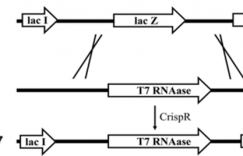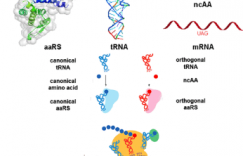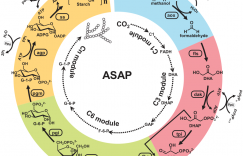解脂耶氏酵母是一有前景的微生物细胞工厂。已有很多研究开发用于基因调控的合成生物学工具,以在解脂耶氏酵母中创建异源合成途径并操纵代谢流。CRISPR干扰(CRISPRi)作为一种新兴技术已被用于特异性抑制目的基因。
近日,来自天津大学的元英进老师实验室在《Microbial Cell Factories》上新发表一项研究《Gene repression via multiplex gRNA strategy in Y. lipolytica》,基于四种不同的阻遏蛋白在解脂耶氏酵母中建立了CRISPRi系统,分别是来自弗朗西斯菌的DNA酶失活的Cpf1(dCpf1),来自酿脓链球菌的失活的Cas9(dCas9)和两种融合蛋白(dCpf1-KRAB和dCas9 -KRAB)。该研究设计了10个与gfp的不同区域结合的gRNA,实验结果表明无论使用哪种阻遏蛋白,抑制效率与靶向位点数目之间都没有明确的相关性。为了快速产生强烈的基因抑制作用,研究人员开发了基于一步Golden-brick组装技术的多重gRNA策略。通过设计靶标gfp基因3个不同位置的gRNAs,可以在短时间内实现85%(dCpf1)和92%(dCas9)的高抑制效率,无需预先筛选有效的gRNA位点。
Background
The oleaginous yeast Yarrowia lipolytica is a promising microbial cell factory due to their biochemical characteristics and native capacity to accumulate lipid-based chemicals. To create heterogenous biosynthesis pathway and manipulate metabolic flux in Y. lipolytica, numerous studies have been done for developing synthetic biology tools for gene regulation. CRISPR interference (CRISPRi), as an emerging technology, has been applied for specifically repressing genes of interest.
Results
In this study, we established CRISPRi systems in Y. lipolytica based on four different repressors, that was DNase-deactivated Cpf1 (dCpf1) from Francisella novicida, deactivated Cas9 (dCas9) from Streptococcus pyogenes, and two fusion proteins (dCpf1-KRAB and dCas9-KRAB). Ten gRNAs that bound to different regions of gfp gene were designed and the results indicated that there was no clear correlation between the repression efficiency and targeting sites no matter which repressor protein was used. In order to rapidly yield strong gene repression, a multiplex gRNAs strategy based on one-step Golden-brick assembly technology was developed. High repression efficiency 85% (dCpf1) and 92% (dCas9) were achieved in a short time by making three different gRNAs towards gfp gene simultaneously, which avoided the need of screening effective gRNA loci in advance. Moreover, two genes interference including gfp and vioE and three genes repression including vioA, vioB and vioE in protodeoxy-violaceinic acid pathway were also realized.
Conclusion
Taken together, successful CRISPRi-mediated regulation of gene expression via four different repressors dCpf1, dCas9, dCpf1-KRAB and dCas9-KRAB in Y. lipolytica is achieved. And we demonstrate a multiplexed gRNA targeting strategy can efficiently achieve transcriptional simultaneous repression of several targeted genes and different sites of one gene using the one-step Golden-brick assembly. This timesaving method promised to be a potent transformative tool valuable for metabolic engineering, synthetic biology, and functional genomic studies of Y. lipolytica.
[pdfjs-viewer url=”http%3A%2F%2Fbioengx.hk1.91site.net%2Fwp-content%2Fuploads%2F2018%2F04%2Fs12934-018-0909-8.pdf.pdf” viewer_width=100% viewer_height=1360px fullscreen=true download=true print=true]









buy lamisil no prescription – order forcan generic buy griseofulvin cheap
buy cheap semaglutide – buy rybelsus without a prescription DDAVP for sale online
glyburide 5mg brand – buy glyburide pills forxiga 10 mg pills
clarinex tablet – buy aristocort 4mg for sale albuterol inhalator buy online
medrol online – cetirizine 10mg cheap where to buy azelastine without a prescription
order generic ventolin – brand ventolin generic theo-24 Cr 400mg
ivermectin 3mg over counter – levofloxacin for sale cheap cefaclor 500mg
order cleocin online cheap – acticlate online order buy chloramphenicol tablets
brand azithromycin – tinidazole order online cost ciplox
buy amoxil generic – cefadroxil 500mg cost buy ciprofloxacin 1000mg online
clavulanate pills – linezolid 600mg us ciprofloxacin where to buy
atarax usa – fluoxetine 40mg cost cost endep 10mg
order seroquel 50mg online – zoloft price eskalith tablet
metformin 1000mg pills – buy lincomycin 500mg without prescription buy lincomycin without prescription
order flagyl 400mg – azithromycin us buy zithromax medication
order ampicillin without prescription buy ampicillin pill buy amoxil tablets
valacyclovir 500mg cheap – buy generic valtrex online order zovirax 800mg online
ivermectin 6 mg for sale – tetracycline 500mg oral order generic sumycin
buy flagyl paypal – capsules terramycin 250mg purchase azithromycin online
buy ciprofloxacin medication – amoxicillin 250mg tablet
order erythromycin 250mg pills
ciprofloxacin order online – septra price order augmentin 1000mg pills
ciprofloxacin 1000mg ca – buy cipro 500mg online cheap order augmentin 375mg for sale
lipitor 20mg drug buy atorvastatin 40mg generic lipitor 80mg pills